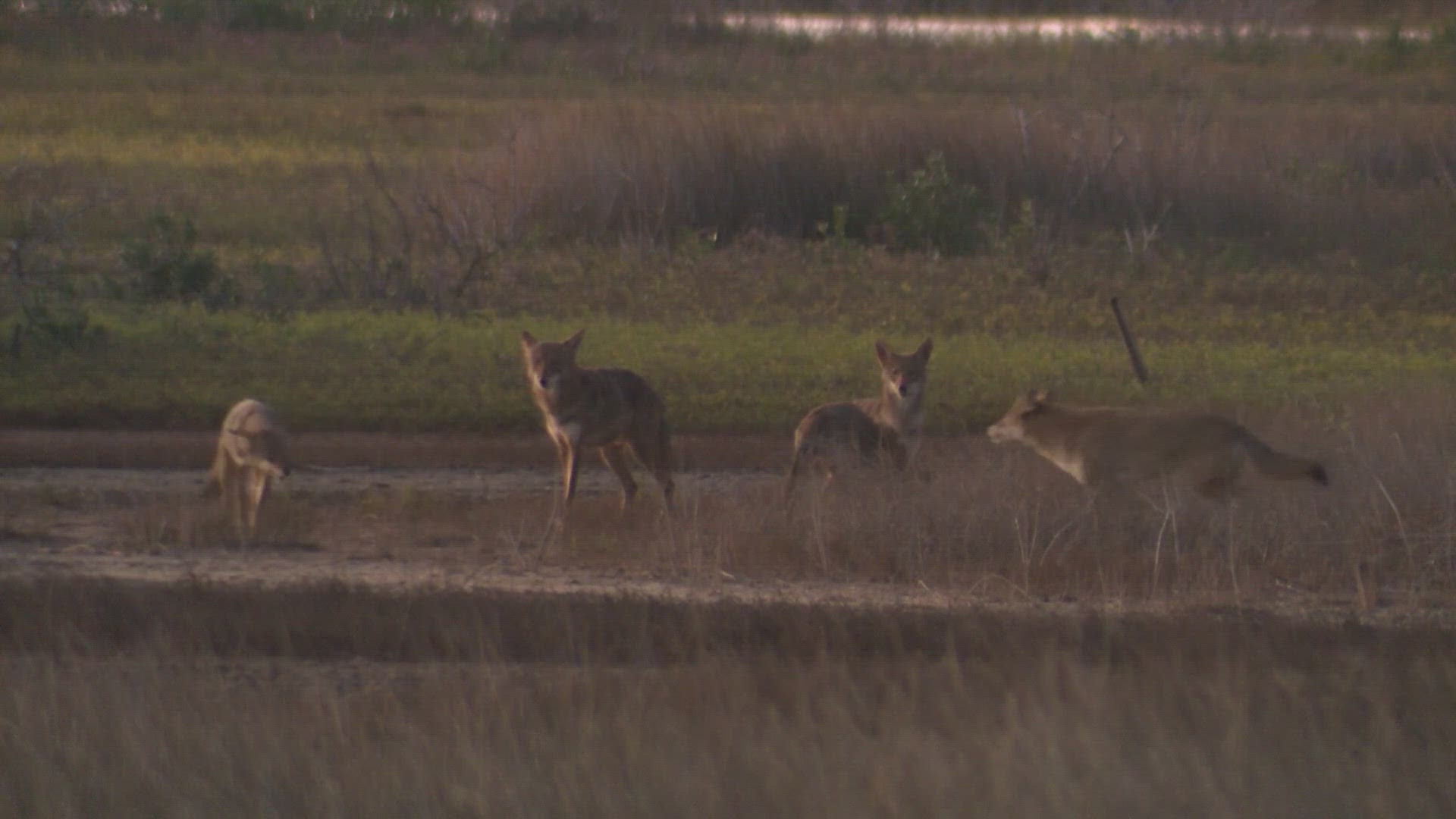GALVESTON, Texas — Galveston neighbors concerned with the preservation of the island’s "ghost wolves" filled the Moody Gardens auditorium Wednesday night to hear the latest findings from animal researchers.
The presentation came at the same time as the start of construction for a new multi-million-dollar resort and waterpark near East Beach.
Conservationists said the development will be detrimental to a nearby pack of the island’s ghost wolves, which have the highest percentage of red wolf DNA.
“We’re not trying to kill development, we’re just asking for some consideration be given, “ Galveston wildlife photographer Ron Wooten said.
He's the one who discovered the ghost wolves in 2016. For Wooten, the ghost wolves have become his purpose.
“They will cross everywhere,” Ron said as he walked along the open space used as a green corridor for the animals.
It did not take long to find the ghost wolves as the sun began to set.
“Four to five in this East Beach pack,” Wooten said. “This East Beach pack has the highest level of genetics for the red wolves.”
A few years ago, Wooten was the first to recognize there was something different about some of the coyotes on the island. After extensive research and testing, his hunch turned out to be true: They were special.
“When you see them, you can actually see the red wolf in them,” Wooten said.
Red wolves thought to have been long extinct on the island were still alive in the blood flowing through Galveston’s coyotes.
“I’d say it’s genetics that’s priceless because it’s no longer out there, except for in these animals,” Wooten said.
It's why Wooten, Ivy League researchers, and many others who showed up to Wednesday night’s town hall are worried about the future of this particular pack.
“These fields behind us will be lost,” Wooten said. “These are fields that’re called green corridors, are used for the animals to transport themselves back and forth across the island. They also use it to hunt, they find mice, they find rabbits they find whatever else they can.”
Wooten said there are den locations just north of the corridors that will be directly impacted by a new hotel.
Construction has started on the 314-room Margaritaville resort, which’ll have bars and restaurants and a large waterpark. The open land zoned for the resort is used by the small pack of East Beach ghost wolves. The animals are not protected by the government. The question many are asking is how the animals cope with the loss of what used to be theirs.
“I think the major concern is if they’re not provided some green space, a certain amount of corridor space, that they’re potentially going to be displaced,” Michigan Technological University professor and wildlife geneticist Dr. Kristin Brzeski said.
Brzreski, along with Dr. Bridgett Von Holdt from Princeton, were among the original researchers of the ghost wolves. The pair helped create the Gulf Coast Canine Project.
Von Holdt said she believes there is hope.
“There are ways to make very intentional plans to provide the space and the privacy that the animals need,” Von Holdt said. “I do think they can cohabitate.
Will that happen? Time will tell.

